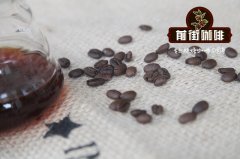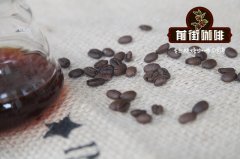Ethiopian coffee beans recommend Ethiopian coffee which producing area has the best coffee quality

Professional coffee knowledge exchange more coffee bean information please follow the coffee workshop (Wechat official account cafe_style)
In Ethiopia, 75% of the population is engaged in agricultural production, with a national arable land area of 165000 square kilometers. Coffee production is among the highest in Africa, with nearly 400000 tons per year, accounting for about 15% of the world's output, with an average annual foreign exchange earnings of more than US $700 million.
Well-known producing areas
Among the nine major coffee producing areas in Ethiopia, the best known in the world are Yirgacheffe, Sidamo and Harald. There are also small producing areas in the large producing areas, such as Cochel, Alida, Humberra Lamp, and then smaller village producing areas. Ethiopian coffee plantation is not obvious, so it is generally divided into large producing areas, small producing areas, village producing areas and washing treatment plants.
Yega Xuefei grows in the highlands of southern Ethiopia, 5700-7800 feet above sea level, in the northwest of Sidamo province. Light baking has unique sweet aromas of lemon, flowers and honey, soft acidity and citrus flavors, fresh and bright on the palate. Xuefei is a small town, 700-2100 meters above sea level, synonymous with Ethiopian boutique coffee. It has been a wetland since ancient times. The ancient saying "Yirga" means "settle down" and "Cheffe" means "wetland". Yega Xuefei originally belonged to the sub-production area of Sidamo, because the production mode and flavor of Ethiopian coffee coffee were too prominent, and its rich and complex fruit flavor made it very popular overnight. as a result, Ethiopian coffee farmers compete to take pride in the flavor of their own coffee. Yejia Xuefei is actually constructed by the surrounding coffee communities or cooperatives, because the special representative farms are numerous and very representative, so they are independent by coffee lovers.
97% of them are grown at home by small coffee farmers. The grading standard of ECX is to define several main growing areas of Ethiopian coffee and whether their flavor characteristics are significant or not, combined with the physical appearance of raw beans. At present, the traceability is generally reflected in the region as the smallest unit, does not reflect the specific processing plant area. Cooperatives and single estates can be exported directly without competitive bidding through ECX and can be said to have completely reliable traceability / product curriculum vitae (traceability). However, if we get to the bottom of the matter, the cooperative is, after all, a centralized treatment of cherries harvested by small farmers, not 100% traceable. After all, a single farm is the only possibility of moving forward to the next generation.
Important Notice :
前街咖啡 FrontStreet Coffee has moved to new addredd:
FrontStreet Coffee Address: 315,Donghua East Road,GuangZhou
Tel:020 38364473
- Prev

Ethiopian Coffee Diffusion Coffee beans Belt and Road Ethiopian Coffee and Kenyan Coffee Zone
Professional coffee knowledge exchange more coffee bean information please follow the coffee workshop (Wechat official account cafe_style)
- Next

Which country's coffee is El Salvador's Mount Wula Manor? is El Salvador's Mount Wula Manor delicious?
Professional coffee knowledge exchange more coffee bean information please follow the coffee workshop (Wechat official account cafe_style)
Related
- Detailed explanation of Jadeite planting Land in Panamanian Jadeite Manor introduction to the grading system of Jadeite competitive bidding, Red bid, Green bid and Rose Summer
- Story of Coffee planting in Brenka region of Costa Rica Stonehenge Manor anaerobic heavy honey treatment of flavor mouth
- What's on the barrel of Blue Mountain Coffee beans?
- Can American coffee also pull flowers? How to use hot American style to pull out a good-looking pattern?
- Can you make a cold extract with coffee beans? What is the right proportion for cold-extracted coffee formula?
- Indonesian PWN Gold Mandrine Coffee Origin Features Flavor How to Chong? Mandolin coffee is American.
- A brief introduction to the flavor characteristics of Brazilian yellow bourbon coffee beans
- What is the effect of different water quality on the flavor of cold-extracted coffee? What kind of water is best for brewing coffee?
- Why do you think of Rose Summer whenever you mention Panamanian coffee?
- Introduction to the characteristics of authentic blue mountain coffee bean producing areas? What is the CIB Coffee Authority in Jamaica?

